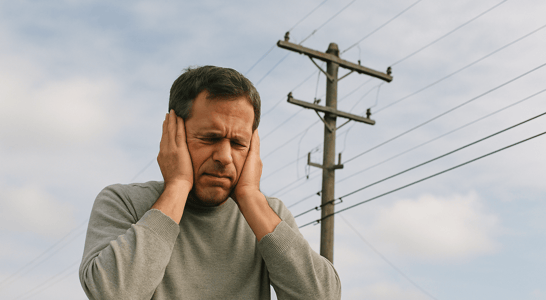
World Bicycle Day
The bicycle is one of the most beneficial inventions for your personal health and for the health of the environment. Get out and get some sustainable exercise.
The bicycle is one of the most important inventions in the history of the planet. It provides millions of people with a means of transport powered by nothing other than their bodies. It’s practical, reliable, and helps one to stay fit.
Many find that it’s a fun and hassle-free way to get around and take care of daily tasks!
How to Celebrate World Bicycle Day
Anyone can do their part and partake in the day by celebrating in unique and fun ways.Check out a few of these ideas:
Make a Donation
You might want to make a donation to a charity that issues bikes to those who need them. Many nonprofits are looking for ways to increase the number of bicycles that people use in developing countries. Many view it as a cheap solution that makes transporting food and water around much more manageable.
Ride a Bicycle
On World Bicycle Day, you can cycle to work, college or school, on your bicycle instead of using the car. One will be able to avoid traffic jams and the cost of gas. You may find this to be a more enjoyable and stress-free way to get around. There’s no gas money required, and the fresh air will feel wonderful!
Using a bicycle will help cut down on CO2 emissions as well. It’s also an excellent way to get some exercise and stay healthy. There’s no denying the feeling one has after being out in nature and exerting some pent up energy. Someone can also encourage others to use this means of transportation by inviting a companion to ride a bike with them to a friend’s house or to run errands.
Share with Others
Encourage other people to use their bicycles to get around town by sharing World Cycle Day hashtags on social media. More and more people are engaging online and wanting to express themselves through these social media platforms. It’s possible that together individuals will be able to make this cause go viral and make impactful changes to the environment and wellness of each other.
Advocate for Bicycles
Celebrate and participate in World Bicycle Day by lobbying to local government to improve cycle and pedestrian mobility in the city. Attend a meeting in the area to voice concerns and recommendations for making bicycling around town easier and more accessible to those in the community. All it takes is a few individuals who are willing to speak up and express viewpoints around this topic to inspire and motivate change.
Get Involved
It’s clear that World Bicycle Day is something that anyone can get involved with, even if they don’t ride a bike. Communities will thrive, individuals will be in better health, and the environment will take a turn for the better when cycling becomes the focus.
There are so many positive results that emerge from World Bicycle Day that it’s certainly worth celebrating. It’s an opportunity to spark more appreciation for this simple yet beneficial means of transportation and to get everyone thinking about all the good reasons cycling should receive acknowledgment and public attention.
Why Celebrate World Bicycle Day
World Bicycle Day is the United Nation’s attempt to recognize the vital importance of the bicycle across the globe. There are many reasons why celebrating this event is helpful to the health of individuals and the environment.
It’s a sustainable means of transportation that’s simple to use, affordable, and is reliable for those who may not have access to a car. It provides access to education, health care, and physical activity for those who don’t have any other means of transportation.
It gives users an immediate awareness of the local environment and fosters creativity and social engagement among community members.
The positive impact on the climate and one’s health simply can’t be overlooked. The bicycle offers a sustainable transportation solution and a way for people to show their support for creating a better environment and planet.
The bike has helped many families across the world to get access to cheap and reliable transportation. It’s no wonder so many partake in the celebration and want to get the word out to others about this exciting and eventful day.
Cycling is an environmentally sound, safe, and healthy way to travel from point A to B. It’s something that we need to do more of if we want to protect the world against the ravages of unsustainable CO2 production.
It can save lives, help improve the environment, and support poverty reduction, and for these reasons, it deserves far more attention than it currently receives.
History of World Bicycle Day
The United Nations launched World Bicycle Day for several reasons. The first was to recognize the sheer transformative impact of the bicycle on society. Pedal cycles give even the poorest people in the world access to transport services.
The bicycle is a long-serving mode of transportation, which has helped practically every human community worldwide. All cultures and people alike can partake in the celebration and show their love for cycling.
The third purpose is to highlight the fact that many cities ignore the needs of pedestrians and cyclists. Policymakers have a bias towards the motor vehicle, serving its needs instead of using environmentally-sound alternatives.
World Bicycle Day, therefore, is a chance to raise awareness of the benefits of cycling and promote measures to ensure better sharing of the roads. It’s a chance for people to demand improvements to road safety and cycling mobility through a change in policies and measurable activity that protects and promotes the safety of riders and pedestrians.
The fourth purpose is to help save lives and reduce poverty. Investing in pedestrian and cycle routes in cities can help cut the rate of deaths while also taking traffic off the roads and investing in safer modes of intra-city travel. Promoting cycling can also help to reduce poverty.
By giving the poorest members of the community access to transportation, they can more easily commute to places of work. It helps them to achieve greater health equity by reducing the risk of heart disease, stroke, some cancers, diabetes, and even death.
World Bicycle Day FAQs
What’s the origin of the term “bicycle”?
The term “bicycle” comes from the Greek word “bi,” meaning two, and the Latin “cicle,” meaning circle.
It emerged in the mid-19th century during the development of early pedal-powered machines. Before this, bicycles were commonly called velocipedes.
Did early bicycles have brakes?
Early bicycles, like the penny-farthing, had no brakes. Riders stopped by placing their feet on the ground or using the front wheel’s handlebars.
This led to many accidents, especially on downhill rides.
Why do some cultures celebrate with bicycle parades?
Bicycle parades are popular in countries like India and Denmark on World Bicycle Day.
These events symbolize unity, sustainability, and the joy of cycling. Decorated bikes often reflect local traditions or global environmental messages.
What role did bicycles play in women’s rights movements?
In the late 19th century, bicycles became symbols of freedom for women.
Cycling challenged restrictive clothing norms, like corsets, and promoted gender equality. Leaders like Susan B. Anthony praised bicycles for empowering women to travel independently.
What’s the longest cycling race in the world?
The Trans-Siberian Extreme is the longest cycling race, spanning 5,700 miles across Russia.
Riders face harsh weather, long distances, and diverse terrains. It exemplifies the extreme challenges that bicycles can conquer.
Do bicycles impact public health beyond fitness?
Bicycles significantly reduce air pollution, improving public health. Cities like Copenhagen credit their extensive cycling networks with lower asthma rates and cleaner air.
Fewer cars also mean less noise pollution, enhancing overall well-being.
What’s the most unusual bicycle ever made?
The “sideways bike” is one of the strangest designs. It moves horizontally, requiring riders to steer left and right simultaneously.
This quirky invention challenges traditional cycling techniques and tests balance.
How do bicycles aid disaster relief efforts?
In emergencies, bicycles deliver aid quickly to inaccessible areas. Organizations like World Bicycle Relief provide sturdy bikes for medical supplies and food.
Their mobility and low cost make them lifesavers in crises.
What’s the cultural significance of cycling in Bhutan?
Bhutan integrates cycling into its Gross National Happiness philosophy.
Cycling events promote physical health and environmental preservation. The nation celebrates it as a mindful, sustainable practice.
Are there superstitions about bicycles?
In some cultures, bicycles are seen as lucky charms. For example, some Chinese riders believe tying red ribbons to their bikes protects against accidents.
Superstitions add a whimsical touch to the practical world of cycling.
Also on ...
View all holidaysGlobal Running Day
Whether you need to get back in the habit or start a new one, take the opportunity to improve your health and well-being by going for a run. Plus, it’s free!
World Cider Day
A crisp, refreshing drink that embodies autumn in a glass. Made from freshly pressed apples, it's the perfect companion for cozy evenings.
National Egg Day
Egg-citing news! Eggs are a versatile and delicious ingredient that can be scrambled, fried, poached, boiled, and baked into so many tasty treats. So let's egg-splore the egg-ceptional world of eggs and have an egg-straordinary day!
National Chocolate Macaroon Day
Usually associated with coconut, the macaroon has been adapted by many different cultures. Try a classic recipe with a chocolate ganache on Chocolate Macaroon Day.
We think you may also like...
National DNA Day
Ever since Watson and Crick’s discovery of the double helix, DNA has aided healthcare, science, even crime. Try a DNA kit, or read about the history of DNA.
SUDEP Action Month
Don’t just raise awareness: on SUDEP Action Month, take actions to help all of society understand sudden death from epilepsy and how to mitigate the risk.
World Psoriasis Day
Uncovering the complexities of skin health and exploring innovative treatments that offer relief and enhance quality of life.







